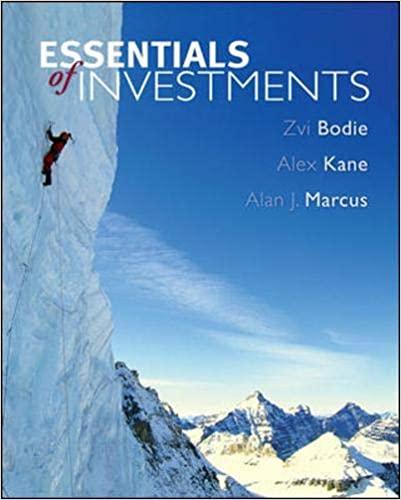Question
Delta Corp bonds have a remaining maturity of 10 years, and they pay interest semiannually. They are selling for $1108 for every $1000 of face
Delta Corp bonds have a remaining maturity of 10 years, and they pay interest semiannually. They are selling for $1108 for every $1000 of face value. They carry a fixed coupon rate of 8%. If Delta issues new debt, it will attempt to issue bonds with a maturity of 10 years. Delta faces a marginal tax rate of 30%. Delta Corp has 5% perpetual preferred stock with a par value of $50 per share (the firm pays a fixed dividend of $2.50 per share in perpetuity). Each share of this preferred is currently selling for $32. Delta Corp common stock is currently selling for $54 per share. The company just paid out a per-share dividend of $5.20 for the year ended. Analysts expect the companys common stock dividends per share to grow at 3% for the foreseeable future. Delta Corp management expects to raise any new funds for proposed projects in the following manner: 50% debt (using 10-year fixed coupon bonds), 10% preferred equity (using perpetual preferred stock), and the remainder using common equity. Delta Corp is evaluating a machine for possible purchase. The machine is priced at $400,000. An additional $20,000 will be required for shipping and installation if purchased. Also, the new machine will require an initial investment in net working capital of $30,000. The machine will need to be depreciated on a 6-year schedule, with equal annual amounts taken as depreciation. However, Delta Corp expects to use the machine only for 4 years and then sell it for an expected $230,000. During each of the 4 years that Delta Corp employs the machine, the companys sales revenue is expected to be higher by $125,000. Additional annual operating costs (other than depreciation) are expected to total $20,000.
1.) What are the expected operating cash flows for years 1, 2, and 3?
A. $91,000
B. $105,000
C. $24,500
D. $94,500
E. $115,500
2.) What is the machine's expected book value at the end of 4 years?
A. $140,000
B. $0
C. $75,000
D. $70,000
E. $105,000
3.) What is the amount of terminal cash flow (i.e., year 4 cash flow)?
A. $230,000
B. $91,000
C. $327,500
D. $94,500
E. $105,000
4.) What is the IRR of the project?
A. 9.11%
B. 8.23%
C. 8.54%
D. 10.72%
E. 7.27%
5.) What is the present value of future cash flows for the proposed project?
A. $327,500
B. $450,000
C. $161,000
D. $481,232.55
E. $611,000
6.) What is the proposed project's net present value (NPV)?
A. $611,000
B. $161,000
C. -$122,500
D. $31,232.55
E. $481,232.55
7.) The machine should be ___________ because its NPV is _________, and its IRR is _______
A. Rejected; Positive; Greater than the WACC
B. Rejected; Greater than the WACC; Greater than the NPV
C. Accepted; Positive; Greater than the WACC
D. Accepted; Positive; Lower than the WACC
Step by Step Solution
There are 3 Steps involved in it
Step: 1

Get Instant Access to Expert-Tailored Solutions
See step-by-step solutions with expert insights and AI powered tools for academic success
Step: 2

Step: 3

Ace Your Homework with AI
Get the answers you need in no time with our AI-driven, step-by-step assistance
Get Started


